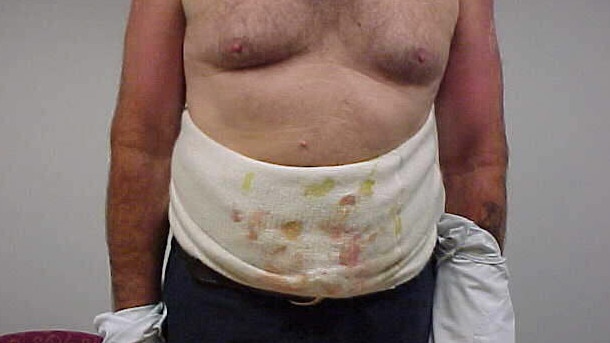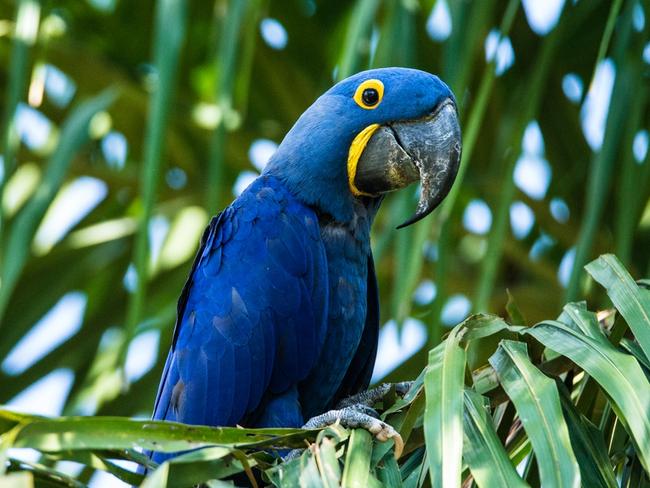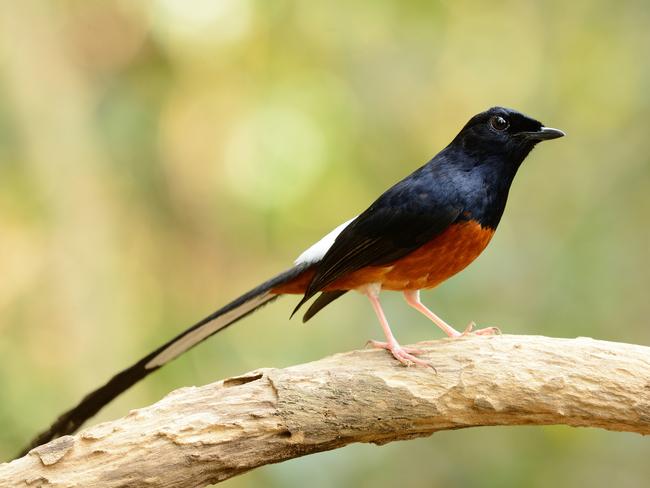Flight risk: How smugglers feed black market for birds of many colours
The risk versus reward of the exotic bird market can make it a more lucrative black market to trade in than drugs for smugglers.

True Crime
Don't miss out on the headlines from True Crime. Followed categories will be added to My News.
Border Force grabbed an international bird smuggler at Sydney Airport last week after he was dropped off by an Australian with a shady history in the exotic bird racket.
The arrested man was a mild-looking Danish citizen who could pass for a vegan accountant named Bjorn or Ragnor or Harald, but for legal reasons we’ll call him Hamlet.
Some say Hamlet is the prince of bird smugglers. That could be over-egging his standing. But he is rumoured to have smuggled eggs of the rare Lear’s Macaw, a king among birds and one of the scarcest of South America’s giant parrots.
The gossip among “birdos” is that Hamlet also moves rare colour mutations of various caged species. Once they appear in one country, such mutants are coveted by fanciers everywhere, and their eggs appear on the global black market.
If the eggs that smugglers trade around the world are not from colour mutations, or from Lear’s Macaws, the odds are they belong to another rare variety: Hyacinth Macaws, the biggest flying parrots in the world. They can be a metre long, more than five times the length and 50 times the weight of a budgie.

Depending who wants them and where, Hyacinths can literally be worth their weight in gold, which is currently more than $50,000/kg.
It’s surprising who has these rare macaws in Australia, as they cannot have been legally imported since strict laws were passed last century. But colourful birds have always attracted colourful people with cash to splash and a bent for breaking rules.
Then there’s the Perth bird dealer who has two pairs of Hyacinths where, until recently, there was none. Other rogues in Birdland include a renowned breeder in regional Victoria who’s also “sourced” Hyacinth Macaws.
It’s inescapable that any Hyacinth or Lear’s Macaws in Australia must originate from illicit imports. The same applies to the sudden emergence of other species, not just exotic parrots and cockatoos.
If there’s a demand, smugglers and their connections will meet it.

Cashed-up buyers who prize pets by price and rarity are the end market for specialist breeders who do business with smugglers, either directly or through shadowy intermediaries like the one who drove Hamlet to the airport last week.
Hamlet’s reputation precedes him, which is a double-edged sword. Bird “investors” seek his services — but bird investigators seek his scalp.
He is mostly an egg man, a specialist at carrying delicate contraband across the world for a black market that’s as lucrative as it is secretive, linking criminal networks, hardcore bird breeders, and millionaires wanting status symbols that cost more than Mike Tyson’s pet tigers but are safer around the house.
Border Force either missed spotting the Dane on his way into Australia … or craftily decided to let him “run” so he could be monitored.
The “birdo” grapevine suggests that Hamlet went north to the Maitland area, where he knows a nest of bird dealers who come up with species not legally seen in Australia.
Border Force, federal police and wildlife inspectors might agree it’s better to know exactly “who’s who in the zoo” before swooping.
Insiders say it’s unlikely that Hamlet came in “clean”. A payload on each leg of the trip is the norm, to maximise profit. But it seems the sophisticated body scanners used on departing passengers are not routinely used on incoming passengers, which raises questions about security at some overseas departure points.
Unless a body search is done, based on suspicious behaviour or leaked information, an egg smuggler arriving in Australia has a good chance of getting through. Proof of that is the number of once-unavailable birds now in this country.

How do they get away with it?
State-of-the-rort smugglers use a custom-made foam rubber vest with neat “egg cup” holes cut into it — and with arm holes top and bottom.
There’s a reason for the extra armholes. Half way through a long journey, the smuggler goes into the aircraft lavatory and removes the egg-carrying vest, gently turns it upside down and puts it on again. This mimics what the mother bird does every few hours, turning eggs so they are evenly warmed on both sides.
When eggs are delivered, savvy buyers pay only after checking each with an “Egg Buddy” monitor that detects the heartbeat of a live chick. This prevents a repeat of the debacle in which an ignorant smuggler brought in 51 eggs after washing them in a strong cleaning solution, hoping to prevent sniffer dogs smelling them. He got through customs — but not one egg hatched.
In another case, a lovesick smuggler took eggs to Thailand but made the mistake of visiting his Thai girlfriend the night he landed. The eggs didn’t survive the delay.
The risk of detection is considerable but, relative to the risk and severity of punishment compared with drug smuggling, rewards can be huge.
If Hamlet was detected with Australian eggs at Sydney Airport, it’s highly likely he was taking out either the coveted glossy black cockatoo or rare “blue” mutations of the common galah.

he “glossy blacks” lay only one egg and are difficult to rear because they like certain native seeds in their diet. But they are intelligent, friendly birds much admired overseas. All of which means that an adult pair can command $170,000 in Europe.
Anyone who pays big money for rare birds is dedicated to their welfare and to breeding them successfully — something that, in the real world, helps guarantee a species’ survival as habitat shrinks from human population pressure.
There are fewer than 2000 Lear’s Macaws left in the wild in Brazil. It’s possible, even likely, that more than that will be bred in captivity — but secretly, because in well-regulated countries like Australia, bird fanciers cannot legitimately account for the origins of their breeding pairs.
The cruel irony is that the ultimate survival of such species now relies mostly on those who originally bought the eggs, fledglings or trapped birds taken by indigenous wildlife poachers in the first place.
Europe has the biggest numbers of dedicated bird fanciers, who breed tens of thousands of exotic birds, apart from millions of pigeons, canaries and budgerigars. That’s why Europeans like Hamlet smuggle eggs to enthusiasts in Australia, North America and Asia. And it’s not only parrots and cockatoos.
An Asian finch called the Sharma has an extremely long tail and is highly prized for its singing.
About 10 years ago, a bird expert wrote an article on a small group of Asian songbird enthusiasts in Melbourne, noting there was just one Sharma in the country at the time.
But at a recent Australian finch society meeting a well-known breeder proudly showed off pictures of multiple Sharmas in his aviary. The only conclusion is that eggs must have been smuggled in.
Hamlet is just one smuggler in a global network. As to who his Australian connections are, investigators are still circling.
According to reputable bird fanciers who play by the rules, there’s more than one way to skin a cat.





